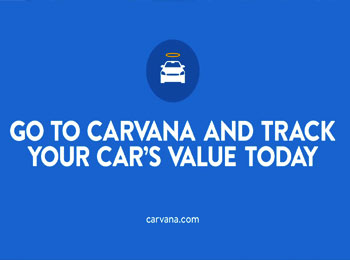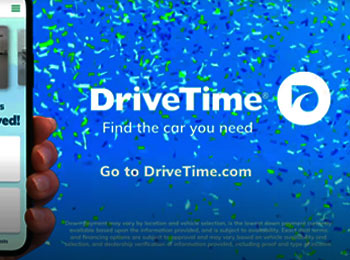Buying a used car can be a tedious process. You have to visit multiple dealerships, negotiate prices, and try to avoid pushy salespeople. But now, you can buy a used car entirely online through companies like Carvana and DriveTime.
These online used car retailers aim to provide a simple and convenient car buying experience. But which one is better for you? Here’s an in-depth comparison of Carvana and DriveTime to help you decide.
A Brief Comparison Table
| Category | Carvana | DriveTime |
| Founded | 2012 | 2002 |
| Business Model | Online used car retailer | Online and physical dealerships |
| Inventory Size | 15,000+ vehicles | 5,000 vehicles |
| Average Price Range | $20k – $30k | $15k – $25k |
| Financing Options | Approvals for all credit types | Specializes in bad credit financing, advertises approvals as low as 525 credit score |
| Pricing Approach | No haggle pricing, lower fees | Advertises no negotiating but additional fees are common |
| Delivery Process | Contactless delivery or pickup within days | Delivery or pickup at local dealership |
| Return Policy | 7-day money back guarantee | Advertised 5-day guarantee but many limitations reported |
| Customer Satisfaction | A+ BBB rating, high satisfaction | Hundreds of complaints, C BBB rating |
| Best For | Online buyers seeking convenience and large selection | Subprime buyers needing specialized financing |
Overview of Carvana and DriveTime

Carvana is an online used car retailer that aims to provide an easy, transparent car buying process without the typical dealership hassles.
Founded in 2012, Carvana allows you to purchase a used vehicle entirely online, from start to finish. Their website lets you view high-definition photos of vehicles, inside and out.
You can get a 360-degree tour, take a virtual test drive, and view all the specs. If you like a vehicle, you can get financing approval online and have the car delivered to your door as soon as the next day.
DriveTime was founded in 2002 as a traditional used car dealership. But in recent years, they have expanded online, aiming to combine the convenience of online car buying with the benefits of brick-and-mortar dealerships.
On their website, you can view nationwide inventory, get approved for financing, and schedule home delivery or pickup at a local dealership. DriveTime has over 145 dealerships across the country, so you have the option to test drive and buy a vehicle in person if desired.
Also Read: Comparison Between CarGurus and TrueCar
Key Differences Between Carvana And DriveTime
- Car Buying Process
The car buying process at both Carvana and DriveTime is simple since everything is done online.
With Carvana, you select a car on their website, get financing approval, purchase the vehicle, and schedule delivery or pickup – all online. Carvana even offers a 7-day money back guarantee, allowing you to return the vehicle if you change your mind. Their delivery service brings the purchased vehicle right to your door as soon as the next day.
DriveTime also allows you to complete nearly the entire process online. You can get pre-approved for financing, select a vehicle, and schedule home delivery or pickup at a local dealership.
One advantage DriveTime has is that you can test drive and inspect the vehicle at their dealerships if preferred. This gives you the chance to kick the tires before purchasing.
So in terms of process, both dealers provide easy online car buying options. Carvana leans more heavily into the full online experience, while DriveTime combines online convenience with in-person dealerships.
- Inventory

When it comes to selection, Carvana offers nationwide inventory with over 15,000+ vehicles available. You can easily browse based on make, model, price, body type and other filters. Since their inventory comes from auctions across the country, selection is wide ranging. However, you may not find as many cheaper, older used vehicles. The average Carvana vehicle price falls between $20,000 – $30,000.
DriveTime has a national inventory of over 5,000 vehicles, focused more on late model cars from the past few years. The average price range is $15,000 – $25,000. With fewer vehicles, selection may be more limited compared to Carvana.
But you can likely find cheaper used cars on DriveTime since they offer older model years. Their dealership locations also allow you to browse and test drive inventory in person.
So when it comes to selection, Carvana definitely wins in terms of volume and variety. But DriveTime may be a better option if you are looking for an older, more affordable used car.
- Financing Options
Both Carvana and DriveTime aim to provide easy auto financing options for buyers with all credit types.
Carvana offers financing approval online in a matter of seconds. They work with dozens of lending partners to help find you competitive rates.
While they don’t specifically advertise financing for bad credit, customers report getting approved with credit scores in the 500s-600s. One potential downside is that you may only find out the APR after selecting a vehicle.
DriveTime specifically focuses on helping people with bad credit get financed. They advertise approvals for credit scores as low as 525. You can get pre-qualified online without affecting your credit score.
This allows you to see your estimated rates ahead of time rather than waiting until after vehicle selection. DriveTime seems to cater more towards buyers needing financing help.
For the best rates, you’ll want a credit score over 600 with either dealer. But DriveTime edges out Carvana when it comes to bad credit financing options. Their advertised approvals down to 525 and upfront rate checks are advantages.
- Additional Fees
When comparing costs, make sure to look at both vehicle pricing and additional fees.
Carvana has a “no haggle pricing” policy where all their vehicles are listed at set retail prices. They say this saves an average of $3,000 versus negotiating at dealerships.
With Carvana, additional fees added at checkout are limited. You pay a $699 delivery fee if getting the vehicle shipped or a $200 transportation fee for pickup. The only other extra cost is taxes and registration fees. Overall, Carvana shoppers praise their low, transparent pricing.
However, DriveTime is less transparent when it comes to added fees. They advertise “no negotiating” but complaints about extra charges are common. In addition to tax and title, most buyers are charged a documentation fee around $399 and a service fee up to $1299.
There can also be additional fees for emissions testing, service contracts and more. So while DriveTime’s base prices may look cheaper, the final out the door cost may be higher once you account for fees.
Carvana seems to offer a better value when it comes to minimizing hidden costs. Their no haggle pricing and lower delivery fees result in more transparent pricing for buyers.
Also watch this review video:
- Customer Experience
What is the overall purchase experience like for each dealer? Here’s an overview of customer satisfaction with Carvana Vs. DriveTime.
- Carvana earns high marks for customer experience – they have an A+ rating with the Better Business Bureau. Customers praise their responsive customer service, speedy delivery, and high-quality vehicles. Complaints are minimal and often resolved promptly by Carvana. Their 7-day money back guarantee also reduces purchase risk for buyers.
- However, DriveTime has hundreds of negative reviews and complaints about misleading sales tactics, poor quality cars, and bad customer service. They have only a C rating with the BBB due to unresolved customer issues. While they advertise a 5-day money back guarantee, many buyers report difficulties actually returning vehicles.
Based on reviews, Carvana delivers a vastly superior customer experience versus DriveTime. Carvana’s focus on customer satisfaction shows with their responsiveness and flexible return policy. DriveTime seems to come up short meeting buyer expectations in many cases.
Also Read: Comparison Between CarMax And Enterprise Car Sales
Frequently Asked Questions (FAQs)
Yes, DriveTime installs GPS trackers on all their vehicles. These trackers allow DriveTime to remotely disable the vehicle if a buyer falls behind on payments. Some buyers view the trackers as invasive, but DriveTime claims it reduces instances of repossession.
DriveTime advertises a 5-day money back guarantee. But many customers report difficulties actually returning vehicles under this policy. DriveTime dealers often claim the return policy is void for various reasons. Customers say getting a refund from DriveTime is a major hassle.
Carvana aims to disrupt the used car market by providing complete online car buying – from vehicle search to purchase to financing to delivery. Their strategy is based on simplicity, transparency and exceptional customer service. By removing commissioned sales people and negotiation from the process, Carvana offers customers a straightforward online car buying experience.
Carvana was founded in 2012 by Ernest Garcia III, a former executive at automotive retailer DriveTime. Garcia still serves as Carvana’s CEO and owns a majority stake in the company. Carvana operates as a publicly traded company under the ticker symbol CVNA on the New York Stock Exchange.
Also Read: Comparison Between DriveTime and CarMax
So in summary, Carvana and DriveTime both aim to make buying a used car more convenient by moving portions of the process online. Carvana provides the most robust online experience while DriveTime adds physical dealership support.
For most buyers, Carvana offers better pricing, selection and customer satisfaction overall. But DriveTime caters well to subprime buyers needing specialized financing help. Consider your needs to decide which option may serve you best for your next used car purchase.
The Verdict
So who wins the Carvana Vs. DriveTime debate? Here is a quick final comparison:
- Carvana pros: Wide selection of nationwide inventory, fully online process, lower pricing/fees, excellent customer service, flexible 7-day return policy
- Carvana cons: Inventory lacks many cheap/older used cars, financing terms disclosed late in process
- DriveTime pros: Physical dealership locations, focused on helping subprime buyers, advertises approvals for credit scores as low as 525, get pre-qualified to view rates upfront
- DriveTime cons: More limited inventory, misleading advertising and numerous hidden fees, poor customer service reputation
Overall, Carvana comes out ahead as the best option for most buyers. Their huge selection, transparent low pricing, and exceptional buying experience make them hard to beat. For buyers needing specialized bad credit financing, DriveTime may be worth considering. But the overall customer satisfaction is much lower.
Unless you specifically need in-person dealership support or have poor credit, Carvana offers the better value and car buying experience for most shoppers. Give them strong consideration for your next online used car purchase.
